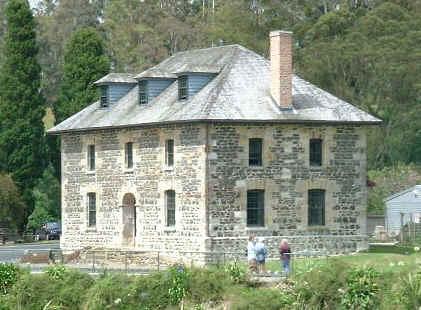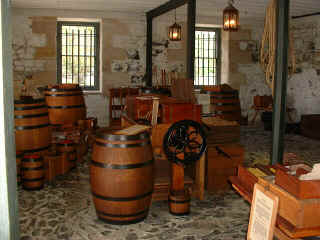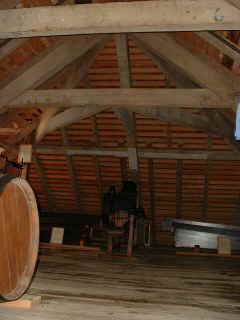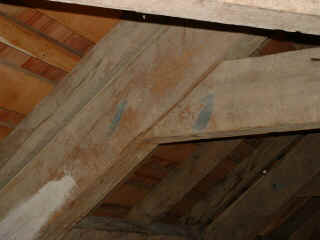 S/V
TETHYS S/V
TETHYS |
Touring
New Zealand by Car
December 2000, February, March 2001 |
Kerikeri
Kedeekedee |
The Stone Store |
|

|
The Stone Store, built in 1832/36 to replace a wooden storehouse,
and the neighbouring Mission House are remnants of the Kerikeri Mission Station. The
walls, about 2 feet thick, are formed of volcanic rock, trimmed with Sydney sandstone
around the windows, doors and the building corners. The roof is wood trussed covered in
wooden shingles. Interior walls and wood beams are whitewashed, but the stairs and upper
storey floors are polished Kauri wood and visitors are invited to remove their shoes and
to feel the history of the building before climbing up the stairs. |
| Stranded in a backwater location the Store saw service as a
theological library, as a magazine and barracks during the Treaty War of 1845, as a Kauri
gum trading store, as a Native Boys School in 1863 and was finally sold to James Kemp in
1874 and run fairly successfully as a trading post. With the collapse of the gum trade
(gum was exported for use in making varnishes and linoleum) after the 1914-1918 War, and
the influx of settlers to Kerikeri after the 1920's the Store became a general store. From
the 1960's it relied more and more on tourism until it was finally acquired by the New
Zealand Historical Places Trust in 1975. By the 1990s the building was close to collapse
but major conservation and restoration work has since returned it to its early strength
and character. Entering the building is like stepping out of a time machine into the 19th
century. |

|
The ground floor is divided into two rooms, the storeroom to the
left and store to the right.
The bare stone walls, stone floor, and wrought iron barred windows of the ground
floor storeroom give credit to the original builders and the meticulous restoration
efforts of the Trust. The storeroom has barrels of various sized wrought iron nails,
replica tools and other examples of the goods that were used and stored here in the 19th
century. A trap door in the ceiling with a block and tackle lifts goods to the
second floor. |
| The staircase leading up to the second floor storeroom, and the
storeroom floor are made of Kauri wood, polished and waxed to a beautiful light coloured
sheen. The ceiling beams and posts are also Kauri wood, but are whitewashed. This
storeroom contains replica tools and two flour mills, one of which is an original mill,
found in pieces during the restoration. The flour mill grinders were imported from England
while the housing, chutes and wheel were made by James Kemp, the mission blacksmith. All
the furniture, crates, barrels and wood implements are also made of Kauri wood, a very
hard, small-grained wood which would have been available locally. Kauri trees are huge,
often over 8 metres in diameter and over a hundred feet tall, native to New Zealand. One
tree is reputed to have supplied wood for ten houses. Few remain now, as they are slow
growing. |

|
 |
The attic of the Stone
Store is bare beams and joists with the backs of the shingles visible. When the Store was
built, the roof was laid out and fully assembled on the ground before being hoisted up,
with parts marked for easy re-assembly.
The number on the truss (1) matches the number on the joist in this photo. No nails
are used in the mortise and tenon joints, which are locked by a small wedge.Originally the
roof was to be slate and the beams and joists were cut very heavy to support the weight
but instead shingles were used. |
 |
|
|